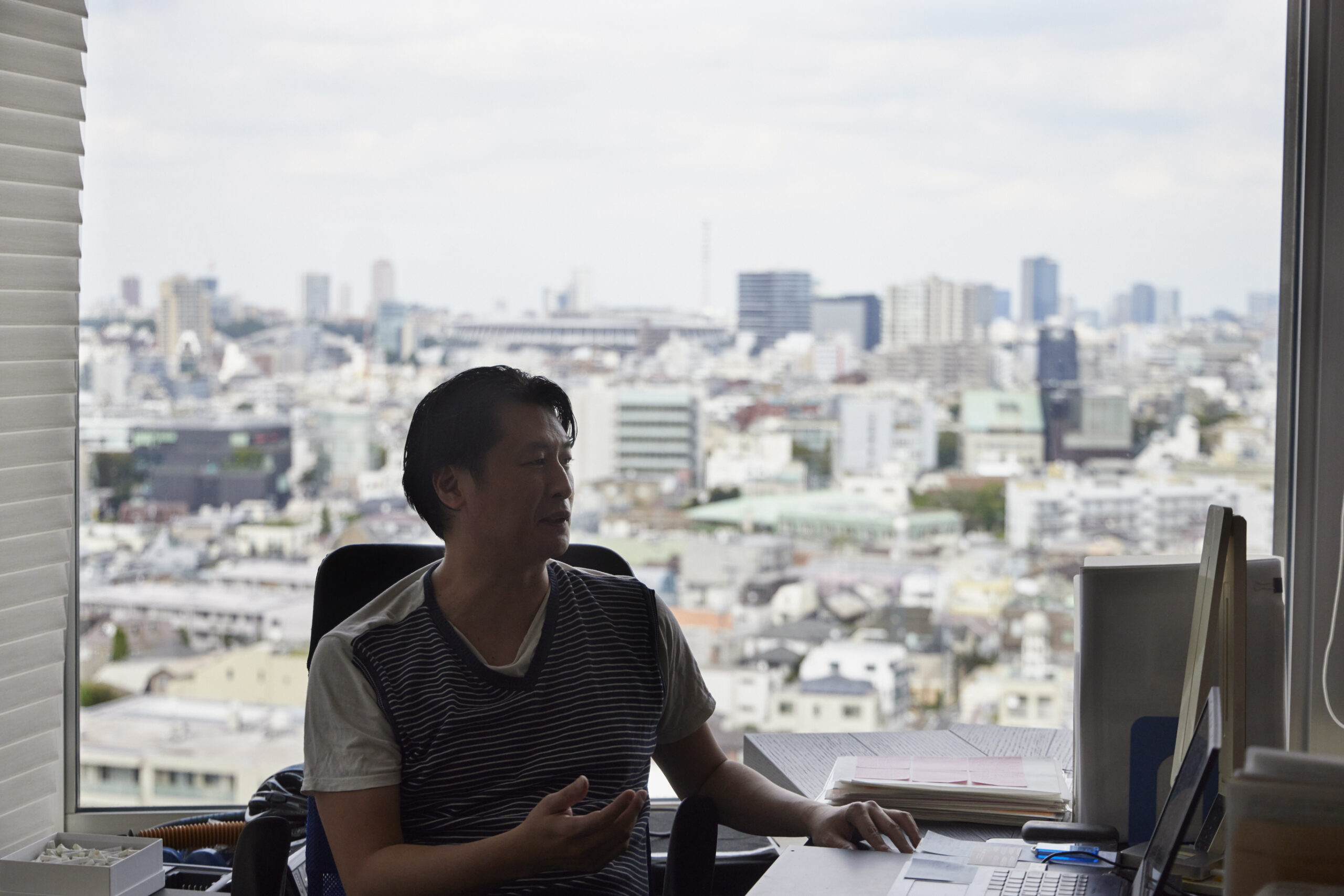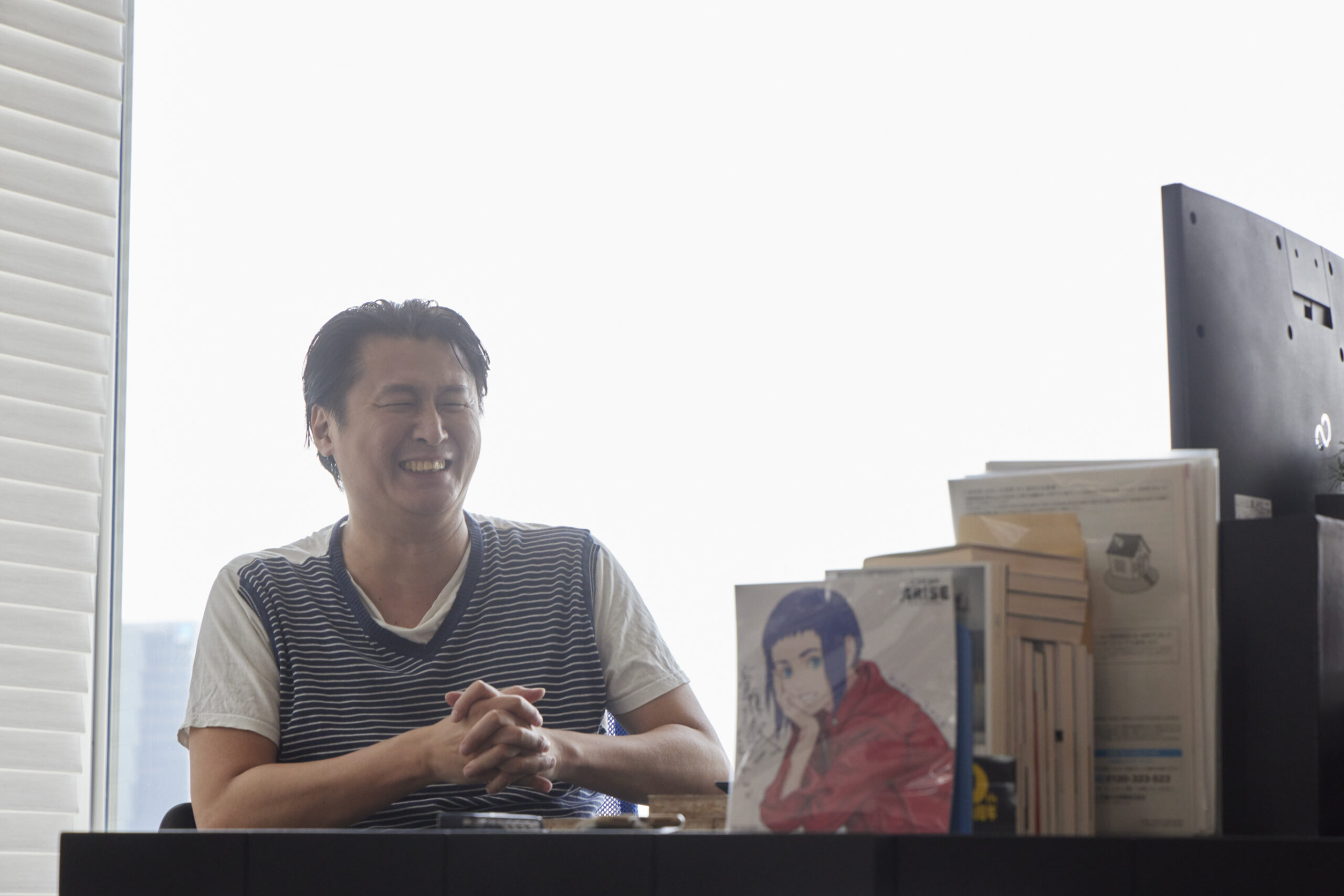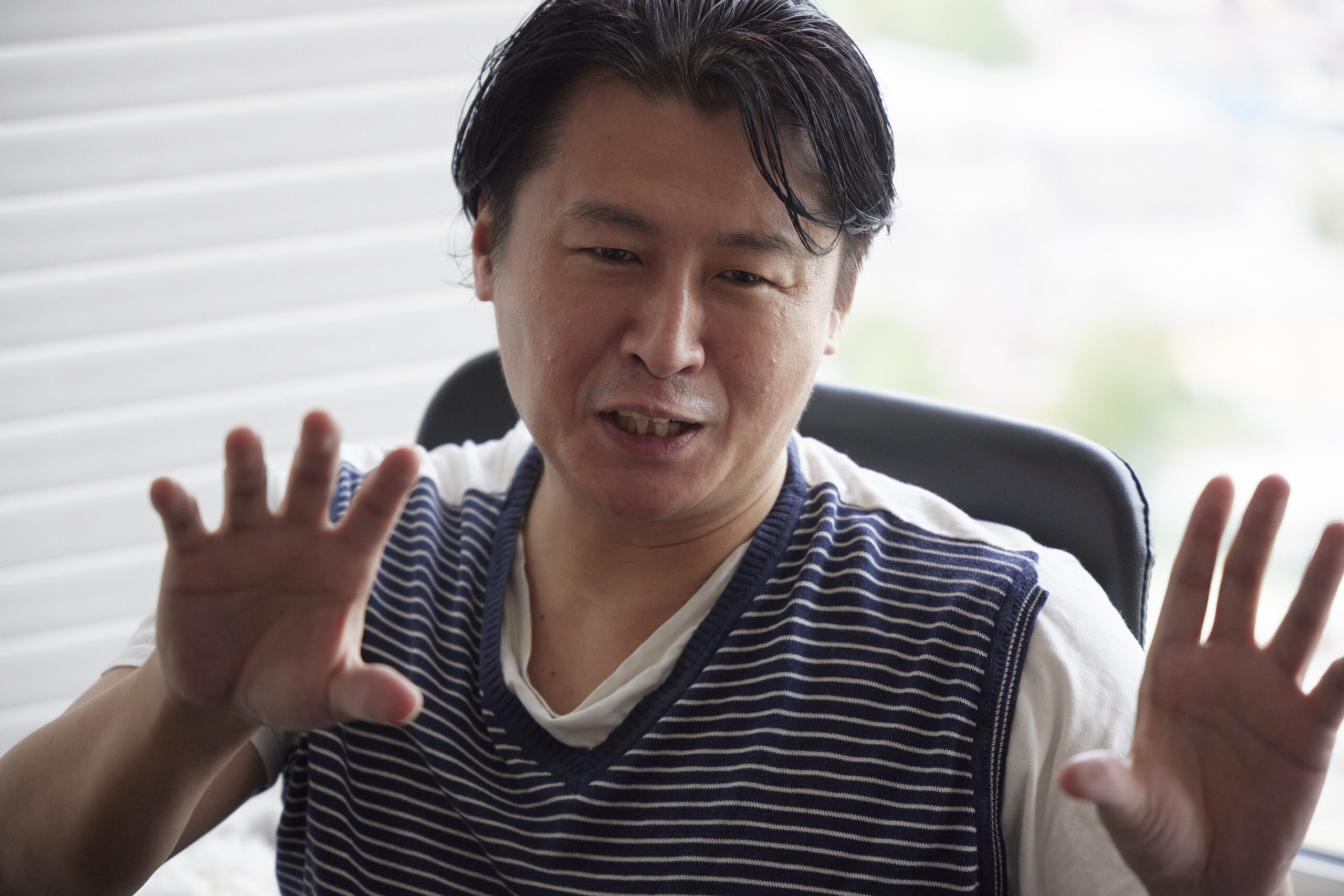
The Questions of “Ghost in the Shell” as Presented by Tow Ubukata: Behind the scenes stories of the origins of “Ghost in the Shell: Arise” and the future of the series #02
Text: Miho Otobe / Photo: Eiji HikosakaThe miniseries Ghost in the Shell: Arise (2013-2014) took on a new challenge with a serial structure utilizing four directors for separate theatrical releases. Meanwhile, one man, Tow Ubukata, worked on the scripts for all of these works. Ubukata has been a series fan since the release of the first manga. While working as a writer on Arise, the internet had reached ubiquity in modern society, leaving a distinct set of struggles in depicting a future society. In this interview, we asked about that, as well as his efforts to preserve the Ghost in the Shell series for future generations and the future he envisioned for it.
#02 The Significance of a Romantic Depiction of Motoko
―You’ve written scripts for anime other than Ghost in the Shell. What would you say distinguishes anime scriptwriting from typical fiction writing?
Tow Ubukata(“Ubukata”): You can write just for the reader with fiction. That lets me try things and express myself freely. In contrast, a lot of different people read anime scripts, so anything ambiguous will be taken differently from person to person. So I try for clearer expressions that only have one meaning, regardless of the reader, for story developments in that format. Even so, spoken lines always end up multifaceted, so I try to tell the performers and audio director my intentions, too.

―What did you struggle with in writing the script for Ghost in the Shell: Arise?
Ubukata: What felt like the biggest struggle while writing Arise was that the real world was approaching a retro-futuristic state at the time. For example, when Ghost in the Shell the film came out in 1990, the idea of using the internet for data was novel at the time. Then, 20 years later, we suddenly entered an era of using wireless internet without even a LAN cable and could discuss depicting wireless connections without attaching a jack to the base of the neck. It’s also common to control machines with just a touch screen now, and the formerly unknown concept of AR is basically normal now.Basically, we kept the jacks on the neck as part of the Ghost in the Shell style, but generally struggled a lot with deciding how to depict the society of the future.
―asically, the real world has caught up with the future society shown in the first Ghost in the Shell film. How did you aim to show distinctions from the modern world in things like atmosphere and city structure?
Ubukata: For example, there’s a scene where we incidentally show a highway traffic control system has an error and causes a traffic jam, which shouldn’t happen otherwise. That’s in “border: 2.” It seemed like a plausible event if AI was in charge of managing highway traffic jams.We also thought a lot about how to depict cars. When I asked a car expert about the car of the future, they said it might not even have a steering wheel; it could just have a monitor for the driver’s seat once self-driving technology is ready. But it would be oddly hard to understand what the characters are riding in if we animated cars that way. Sci-fi movies also often have scenes with HUD readouts on traffic and so on all over the windshield, but that would cause accidents and other issues in reality since it obscures your field of view. The series is especially challenging because you need to square current common sense with entirely new concepts.
We handled urban settings the same way; Ghost in the Shell introduces the concept of optical camouflage, which would let you eliminate the gigantic buildings from the skyline if you had it in real life. But that would leave the city empty-looking, so we decided not to use it. *Laughter* Society will only get more transparent as technology advances, so depicting that is an issue for anyone working on the art of the future of society. And of course, I’ll have to deal with the issue further in the future, but I’m proud I got to present it as a question for the next generation, too.

―The way you depicted cyborgs in the series, including Motoko, also made an impression.
Ubukata: In all my other work up to that point outside of Ghost in the Shell, cybernetic body parts are always part of a tragedy, and cyborgs are shown as tragic beings. But when I thought about the normalization of prosthetic arms and legs that will eventually come about, I realized we can’t just assume that having mechanical body parts means being unhappy. Depicting them that way might even get the work banned someday in the future for being prejudicial. So we had to find a positive way to portray physical mechanization. So I took measures like adding a visual of a pregnancy with a cybernetic body and lines that were positive about cyborg technologies and asking the performers to hand the subject with care while making “border: 3.”
―That’s a vital point for preserving Ghost in the Shell for future generations and related to your focus on expanding its potential, isn’t it?
Ubukata: That’s right. In contrast, I tried to present the issue of being unable to update a cybernetic body in Ghost in the Shell: The New Movie. If you lose the ability to update for whatever reason, then you could end up disposable in the future. That seemed like a huge issue with becoming partially cybernetic.
―In the episode “border: 3,” you depicted a bittersweet romance between Motoko and cybernetics technician Akira Hose. What were you aiming for, there?
Ubukata: Love is an area where we can feel growth in ourselves since we value another person’s feelings over our own when in love. That’s what made me want to show Motoko in love. And failed relationships make for better stories than successful ones. That’s what made me decide to go with the idea of her being tricked by a smooth guy.
―Motoko doesn’t really talk about love a lot, but we conveyed her romantic affection for Akira through her expressions and gestures.
Ubukata: If Motoko was eagerly pursuing someone and used words like and love a lot, it would inevitably come off comedic in tone. Kise directed “border: 3” and said he wanted to make it like a date movie, so the final decision was for a mature depiction that deliberately avoided extensive direct dialog. That makes all of the distance and closeness, the gazes, touches, and gestures exclusively shown by the animator. I felt like it was a huge task to take on, but Kise said, “Please let me!” So I let him. The finished work was incredible, with things the script didn’t mention, like the cute headbutt Motoko gives Akira.

―Even out of all of Ghost in the Shell: Arise, “border: 3” shows a particularly human side of Motoko.
Ubukata: That episode was the biggest struggle for me with how to show a more organic side of Motoko. That’s also why we had Motoko close the curtains on her dreary room and lay out a rug, then start moving furniture. At the extremes of advanced development, cyborgs should only need coffin-like spaces to lay down and recharge. But humans couldn’t live like that. We organize our spaces to make life pleasant. I felt like that demonstrated Motoko’s humanity.In “border: 3,” Motoko asks for the prettiest legs she can get, gets annoyed at poorly-fitting legs, and generally shows emotions as well as doubts about her own existence. I put particular effort into the scene where Motoko mutters that “it makes me want to lose myself and just tell someone I’m not a robot.” Out of all the animes I’ve worked on, not just Ghost in the Shell, “border: 3” is one of my favorites. I have a lot of memories about it.
Continued to #03 AI and Drones as Challenges for Ghost in the Shell
TOW UBUKATA
Born in Gifu Prefecture in 1977. He made his authorial debut as a student at Waseda University in 1996. He won the Eiji Yoshikawa Prize for New Writers, the Honya Taisho Booksellers’ Award, and more for Tenchi: The Samurai Astronomer. Nominated for the Naoki Sanjugo Prize for the same title, as well as works including 12 Suicidal Teens and Koppai. He is also an active anime series showrunner and scriptwriter, with credits including the Fafner in the Azure and Psycho-Pass series.

